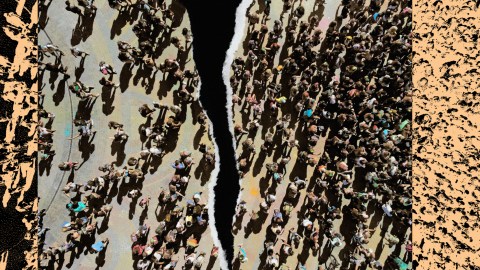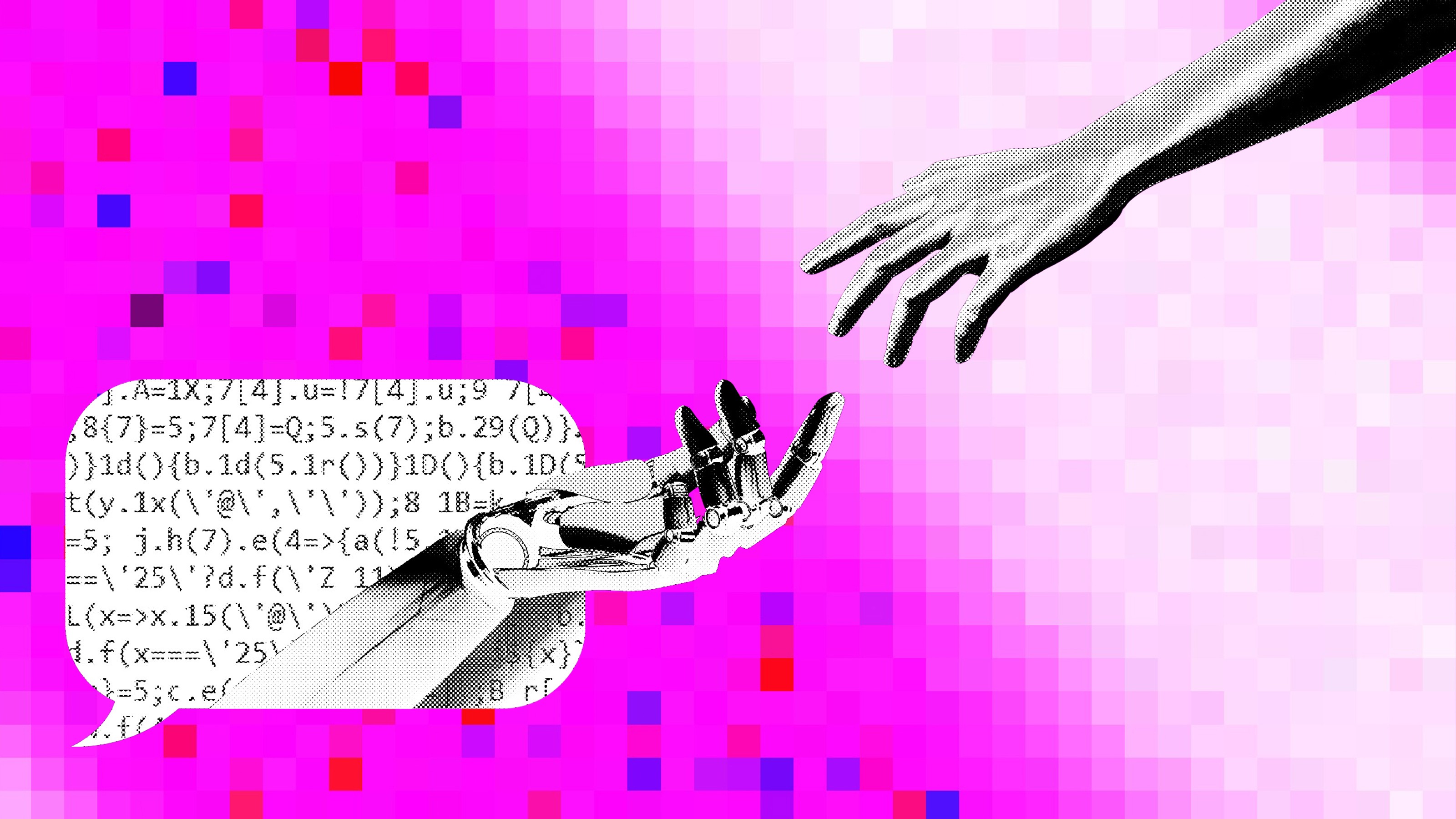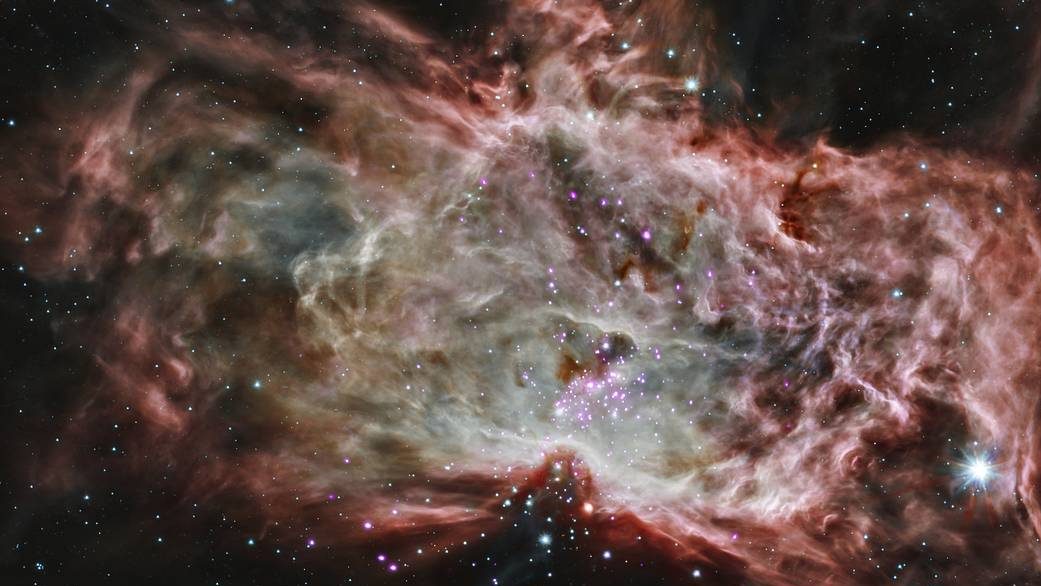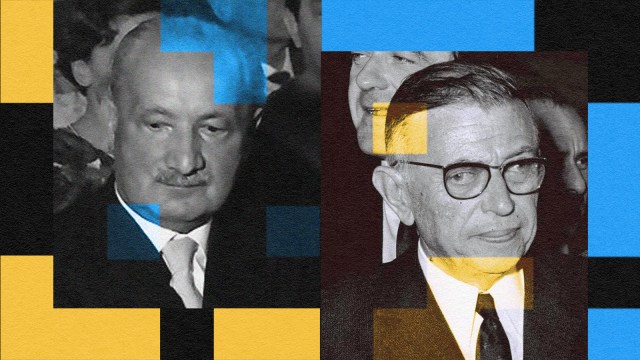Have we created a society that’s too complex to survive?

- Human societies evolved from simple to complex over millennia, experiencing slow change until recent centuries when technology accelerated our evolution.
- Over the past two centuries, technological advancements have transformed society at an unprecedented pace.
- Adam Frank explores how this increasingly quick pace of techno-social evolution raises questions about humanity’s ability to adapt.
Homo sapiens evolved as a separate species about 300,000 years ago. Measured in generations (with each generation lasting 20 years), that means there are about 15,000 great-great-etc. grandparents separating you from the earliest human ancestors. While that’s a remarkable fact in itself, what’s really remarkable is how the world each of those generations experienced was remarkably static. Of course, there were natural disasters and wars. In general, however, the “techno-social” universe your 9,045th great-grandparent lived in was not very different from the one your 9,046th one inhabited. The same holds true for the vast majority of generations after them.
But this kind of generation-to-generation stasis is clearly not the case for you, me, and most people on the planet today. Instead, we inhabit a world of rapid change driven by technology that has produced a techno-social world of staggering complexity. It’s a situation utterly unlike almost every other generation in the human lineage.
So, is that a problem? Have we created a world that’s too complex and fast-changing for our own good?
An unprecedented experiment
The arc of human cultures has, generally, run from smaller hunter-gatherer groups to larger and more complex arrangements. The story that’s often told is one where the switch to agriculture and domestication of animals about 9,000 years ago drove humans to create sedentary societies. These grew in size along with the food yields that crop cultivation and animal husbandry allowed. In this way, villages grew into towns, towns into cities, and cities into empires. While some aspects of this story — such as the role of agriculture — are now more fiercely debated, it’s clear that human societies have grown in both size and complexity.
Complexity can be measured in a lot of ways but one of the most fruitful is to think of a society as a network of relationships. Using the tools of network science, it’s possible to map out what’s called the “topology” of the network. A network where every person has a connection to everyone else looks a lot different from one where every person only knows a few people who also know a few people and so on. And, to use an extreme example, both these network topologies are different from one where everyone knows just one particular and very central individual.
When we were hunter-gatherers in small tribes, we lived in the “everyone knows everyone” kind of network. But as societies got larger, the topologies changed. There were still local social networks, but these became embedded in larger webs of relationships that handled everything from government administration to trade (think of Imperial Rome or Song Dynasty China). But while these “civilizational” networks were more complex than the ones humans inhabited 100,000 years before, the pace of change was still slow. If you were alive in 97 CE somewhere in the Roman Empire, you probably used the same kinds of tools your grandmother or grandfather used. (In fact, it’s quite possible you still used their tools.) Just as important, the rules of the social network changed slowly: Most generations didn’t see radical social change within their lifetimes unless some conquering army arrived, and even then, the rules of the social order (i.e. the social networks) might not have changed much.
Techno-social evolution
In the world we’ve built over just the past century, however, the pace of significant technological and social change has occurred within fractions of a single human lifetime. Think about how many iterations of the telephone you’ve seen. At my advanced age of 61, I can remember when phones were connected by a cord to a wall. Now, technology advances so quickly that we are all forced to buy a new phone every few years because the old ones just can’t keep up anymore.
While phones are just one aspect of our technological networks that have changed, we can stay with them to see technology’s impact on social organization. You don’t need me to tell you how profoundly social media and other digital platforms have rewired social and political norms. From dating apps to the rapid spread of political disinformation, the expectations for how people can or should behave has been rewired and then rewired again on a timescale that is now sub-decadal.
The crucial point to understand when considering these changes is that every system has inherent timescales for change built into it. These timescales are based on the “laws” of the system, its internal rules of order. If the system is a bunch of planets orbiting a star, then the laws are those of gravity and angular momentum. If the system is a food web in a pond, then the timescale may be based on how long it takes for water to flow from one end to the other. What matters here is that if the system experiences changes over a period that is longer than, or close to, the inherent timescale of the system, then that system can usually adjust. It won’t blow up or fall apart in response to those changes. But if the changes are really strong and they occur very quickly compared to the system’s inherent timescales, bad things can happen.
So, what is the inherent timescale for the networks that make up our human techno-social world? That’s the million-dollar question. The naïve answer: roughly a human lifetime (i.e. a century or so). There was a lot of change from 1820 to 1920 but society didn’t fall apart. This may have something to do with the flexibility of both human cognition and the nature of the social networks (their topology) that keep societies stable.
Now, however, we seem to be driving strong changes on timescales that are less than a single generation. Is this too fast for the distributed cognition that occurs over our social and political networks to handle? Is the pace of technological change — coupled with the impact those changes have on social organization (i.e. the rules of the network) — now too fast for our systems to absorb? That, too, is the million-dollar question.
Still, one thing is certain. All the generations alive today are part of a vast, unplanned experiment in the flexibility and stability of human social orders. Our fate as a planetary species depends on how that experiment works out





